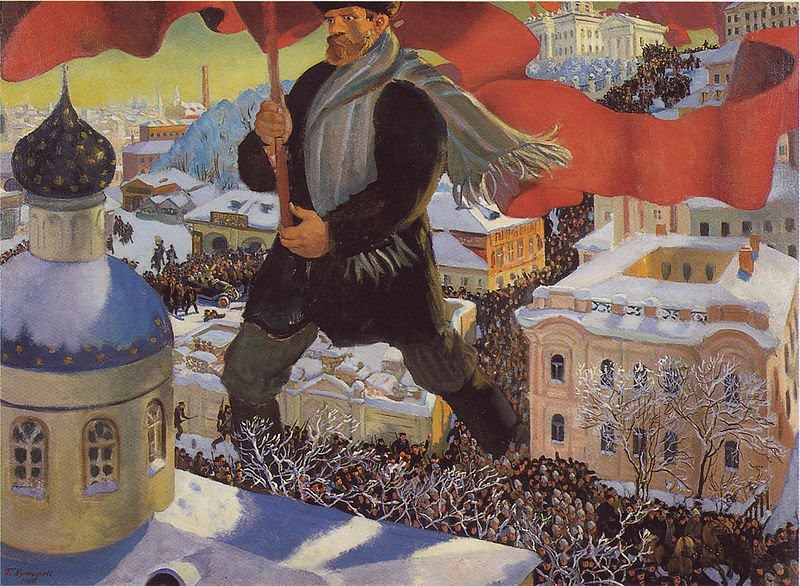The above officer is wearing, besides the Cheka fifth ("V") badge, an early form of the Order of the Red Banner (the first award to be created by the Soviets after they had discontinued the practice of awards all together because some thought it hearkened too much back to Imperialist Russia's class system in which heavily decorated officers were among the higher echelons of power and influence in the aristocratic society even though they might not be of noble birth. Typically, however, no one rose to the highest ranks of the Tsarist military unless they had exceptional skills on the battlefield or were born among the wealthy and/or nobility.
The Cheka officer above is also wearing an award that is considered by most collectors to be one of the rarest and most difficult to find - the so-called "Tractor Lenin." The design only existed a few years and was given its nickname because a tractor is displayed prominently in the background of the obverse of the order. All later models were gold with elaborate enamel work whereas this one was made from silver with a small amount of gold plating and enamel. This, together with the 5-year Cheka anniversary badge dates the photo as no earlier than 1922. It is likely he was awarded the Order of Lenin and Order of the Red Banner (which at the time were presented together) as an award for efforts in the Russian Civil War.
It was very common for servicemen and women of all branches - military and security services - to have their photos taken in full dress uniform, usually after a graduation, promotion or in honor of some occasion or even for their official personnel file. The organization calling for or taking the picture would typically write who the photo was of, his or her rank and was generally signed and/or stamped by the same organization.
Disclaimer: I do not know the person's name, nor to whom this picture might belong - it was sent anonymously in an email with a simple typed note asking if I could use this photo for this website. So if anyone knows anything about the current owner of the actual photograph and either wants it removed or given credit, simply show me the reverse in context (such as near a current date on a newspaper) and give contact information and the deal will - whichever - be done.
In the photo above, a young OGPU officer leans to one side for his photo as a member from Azerbaijan SSR. Though this was taken likely prewar, notice the unique sleeve, rather than what would be come the international standard use of shoulder boards as rank insignia.
One of the most notable aspects of the uniform is the unusual, almost corduroy-looking, material it seems to be made from, but this could be simply a number of things including lighting and stitching. The other remarkable thing about the uniform is the enormity of the buttons on the jacket. Also worth noting is the cloth belt. Regulation Red Army belts were leather with a large rectangular single- or double-tong buckle with regular waist belts and some with over-the-shoulder straps. Another variety came along a bit later and were buckles that were more square and had the hammer, sickle and star with "rays" motif but it was usually reserved for officers in all army belts. (See photos below for examples.)
The belt above is a variation of the previous photo but it is unclear as to what the country of origin it is - whether USSR, a republic or simply another East European country on the side of the Soviet Union during The Great Patriotic War. The point is that it is made identically to the definitely Soviet version. There is a brass stud that comes up from the lower layer of the belt and pushes through the top layer to hold it in place. This design was eventually done away with all together.
Early Chekist-GPU uniforms varied from region to region and often differed from the All-Union Chekist official versions based on a number of reasons from regional customs to distance from Moscow which would cause regulation uniforms to take longer to reach Far-Eastern republics and some areas simply kept the style they had before for preference.
Ultimately, any effective political police officer would never appear in public wearing any uniform save the standard army clothing. The use of Royal Blue (sometimes referred to as "corn silk blue") as a symbolic color of the security services did not come into regular, widespread use until the late 1920s - early 1930s.
|






